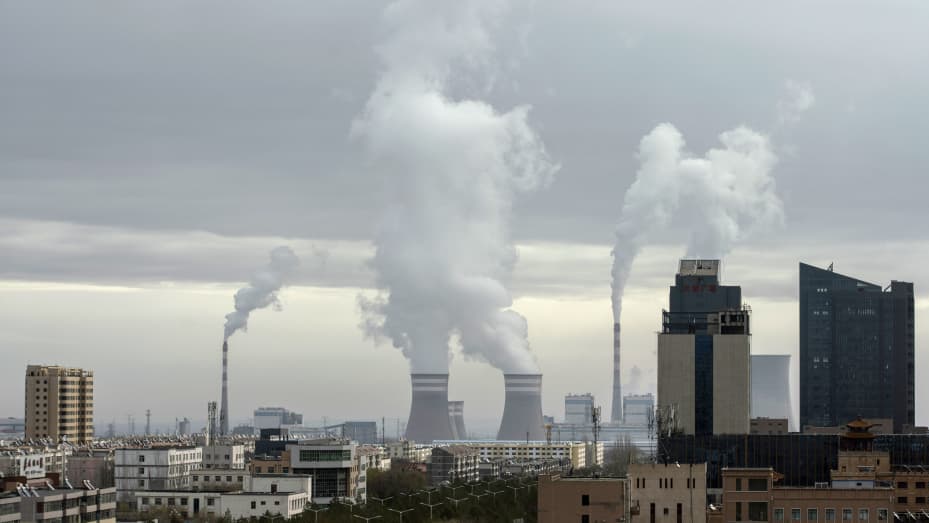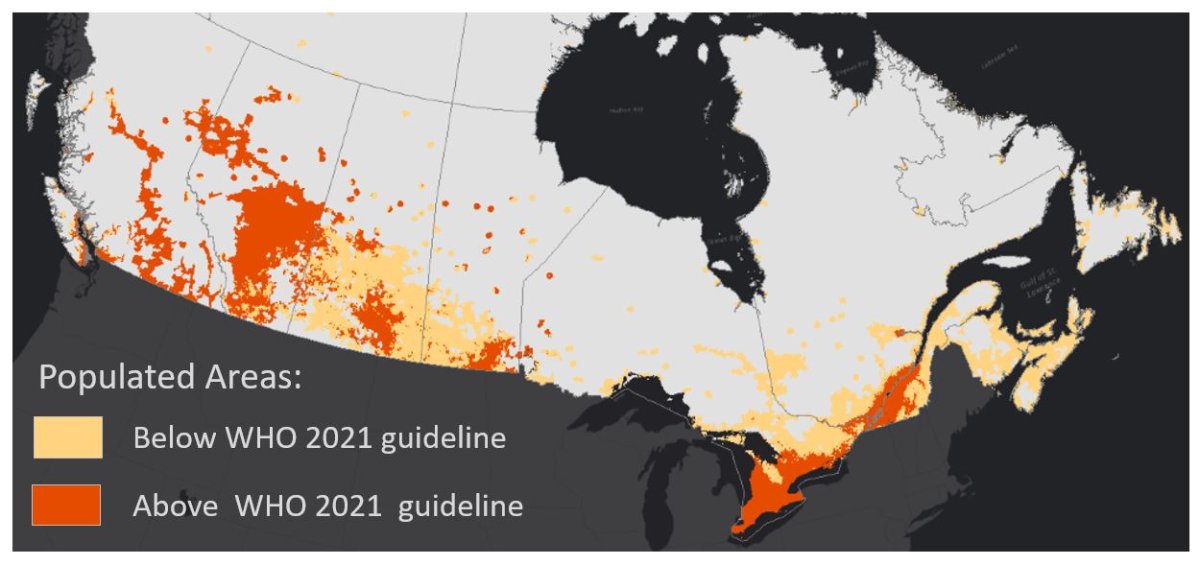Canadians are among the world's worst carbon emitters. Here's what we can do about it
Berlin-based think tank says by 2050 average Canadian
footprint must be cut by 95%

A new report from a Berlin-based think tank shows Canada is trailing behind other wealthy countries when it comes to cutting carbon emissions, and outlines concrete steps that individuals, governments, and businesses can take to help the world limit warming to the 1.5 C goal set by the Paris Agreement.
The report, 1.5-Degree Lifestyles: Towards A Fair Consumption Space for All, was produced by the Hot or Cool Institute, and compares 10 countries selected to represent a range of income-levels — Canada, Finland, the United Kingdom, Japan, China, Turkey, South Africa, Brazil, India, and Indonesia.
Out of the countries studied, Canada had the worst per-capita record by far.
(Australia and the United States, which are also among the world's highest per-capita emitters, were not included in the report.)
The analysis compared the average per-capita carbon emissions of people in each of those countries, a metric the authors called "average lifestyle carbon footprints." The report focuses on key domains where tangible lifestyle changes could make a significant difference, including food, housing and personal transportation.
- Have questions about climate science, policy or politics? Email us: ask@cbc.ca. Your input helps inform our coverage.
The average person in Canada produces an equivalent of 14.2 tonnes of CO2 as of 2019, according to the findings. By comparison, the average per-capita footprint in Finland is 9.7 tonnes and in the United Kingdom it's 8.5 tonnes.
"I do think the atmosphere in Canada provides a real opportunity for us asking for change," said lead author Lewis Akenji, who is also the managing director of the Hot or Cool Institute.
Akenji said the idea was to link the Paris Agreement targets to tangible lifestyle changes that can make a difference, in light of this year's "code red" report from the United Nations Intergovernmental Panel on Climate Change (IPCC).

'Not just the individual': Need for better infrastructure
If Canada is going to play its part, he said, the country will need to cut per-capita carbon emissions by 82 per cent in the next decade, and by 95 per cent by 2050.
Eating meat, using fossil fuel cars, flying, and living in large houses with high energy consumption are all highlighted in the report as lifestyle choices that contribute to larger carbon footprints.
"There is no universal sustainable lifestyle," the report states. "If one must use a car, then an electric car in Iceland might make sense, where 100 per cent of electricity comes from renewables, but not in India where electricity is primarily generated from coal."
While the cuts required might sound drastic, it is possible according to Madhur Anand, a professor in the school of environmental Sciences at the University of Guelph and director of the Guelph Institute for Environmental Research.
"We can make progress really quickly. I would look at it from that perspective, rather than think that it's a problem that's too big to solve," Anand said.
Many European countries, such as Germany and the United Kingdom, started investing in technology to cut carbon emissions long before Canada, but experts say there is still time to catch up.
"It is not just the individual that has to change," Akenji said. "Policies need to come into place, businesses need to come on board with viable products that are sustainable."
"You cannot have citizens just taking action and the government waiting for citizens to change their lifestyles. Canada does not have that luxury."

Fewer fossil-fuel cars, less meat
The concept behind the 1.5 Degree Lifestyles report was to take the target of limiting warming to 1.5 degrees above pre-industrial levels and, drawing on modelling from the IPCC, establish an equitable target carbon footprint for individuals — one that is the same no matter where a person lives in the world, rich or poor.
The number to shoot for is 0.7 tonnes of CO2 per capita each year by 2050, according to the report's findings. In order to be on track to hit that mark, the average should be 2.5 tonnes per person by 2030.
Preventing the runaway global warming and extreme weather events predicted in the IPCC's latest modeling will require changing how we get around, how we heat and cool our homes, and what we eat, according to the Berlin-based research.
Much of the responsibility lies with countries like Canada, where the report found that per-capita consumption emissions are six times higher than India's, which average to 2.2 tonnes per person annually.
Canadians' love for meat and dairy were found to be significant contributors to carbon footprints, partly due to the popularity of cheese and beef, which are carbon-intensive foods.
Keeping houses heated is another major factor. While Canadians can't help that they have long, cold winters, their reliance on natural gas as an energy source combined with large living spaces makes household footprints larger, according to the report.
By comparison, in a lower-middle income country like India, living spaces are smaller and a significant portion of the population lives in poverty; as a result, the overall energy demand is quite low per person due to basic living conditions and a warmer climate. That, combined with the popularity of vegetarianism keeps carbon footprints comparatively low, with most of the food consumed being plant-based and low-impact.
Anand recently published a paper about how global inequity can actually exacerbate climate change, due to conflict.
"We know there's a huge inequity problem in terms of climate change both on the side of emissions but also on the side of impacts," she said.
"We need to see richer countries helping poorer countries. There's no other way around it."
Even compared to wealthier countries, Canada has a lot of work to do.
Take Japan for example, where people are far less dependent on cars thanks to reliable, efficient public transit systems.
For the average Japanese person, transport contributes 1,970 kg CO₂e to their carbon footprint. For the average Canadian, it's more than double that, at 5,000 kg CO₂e.
"By far the biggest savings Canadians can make in terms of changes are to move from private car use to shared mobility systems," Akenji said.
"The government needs to make sure that these [shared transit] options are available … that they are efficient [and] they are regular so that people can depend on them to go to work or to go visit family, and also that they are clean and safe."

Diet is another factor and if Canadians want to lower their footprints, the report suggests eating less meat. Meat products make up for 61 per cent of the average Canadian's food carbon footprint of 2,270 kg of CO₂e per year.
Tom Gunton, founding director of the resource and environmental planning program at Simon Fraser University, said he believes there is momentum in Canada for change.
"It's all do-able. We just have to roll up our sleeves and get at it," he said.
"The bad news is that we have a very poor record in Canada. We have very high emissions compared to any of the wealthy countries in the world. The good news is that we are actually starting to develop plans to achieve these reductions."

Work to do, says government
Canada has committed to cutting emissions by 40 to 45 per cent by 2030 and transitioning to net-zero emissions by 2050.
Gunton said what's lacking is a plan that firmly outlines how those targets will be reached, especially while the energy sector continues to rely on oil and gas.
"We're moving in the opposite direction and that's probably our biggest gap right now. We need to eliminate all the subsidies in the oil and gas sector and use that money for investing in renewables or helping transitions in that sector for workers."
With the UN climate conference in Glasgow, Scotland, fast approaching, the office for the Minister of Environment and Climate Change Canada acknowledged there is work to do.
Press secretary Joanna Sivasankaran said that, while Canada is responsible for less than two per cent of the total global greenhouse gas emissions, it's true the country is one of the highest per-capita emitters in the world.
"The Government of Canada has a real and serious plan to tackle climate change by cutting pollution from every sector of the economy and every region of the country, including measures to cut emissions from transportation, homes and buildings, and agriculture," Sivasankaran said.
Phasing out gas generation by 2030 would
lead to blackouts, higher bills: IESO

Phasing out natural gas generation by 2030 would result in rotating blackouts and higher electricity bills, Ontario's electricity system operator said in a report released Thursday concluding that the move isn't possible on that timeline.
The Independent Electricity System Operator examined the idea after 31 municipal councils in the province called for it to happen by the end of the decade.
The IESO concluded it would be too costly for a relatively small return on emission reduction, wouldn't be possible to build the necessary infrastructure in that time, and would leave supply too unreliable.
Phasing out gas generation by 2030 would cost more than $27 billion to install new supply and transmission lines, increase annual system costs by $5.7 billion a year and result in an extra $100 on an average monthly electricity bill.
"A gas phase-out strategy by 2030 provides a very poor return on investment, and suggests that it would be more cost-effective to direct spending into broader carbon reduction strategies that produce much greater impacts," the report concludes.
Ontario's electricity system is already 94 per cent emissions-free, the IESO said, thanks to the phase-out of coal seven years ago, and accounts for a small percentage of the province's overall emissions.
But the IESO has projected that emissions from the electricity sector will rise from around four megatonnes currently to more than 12 by 2030, largely due to nuclear refurbishments and retirements, resulting in a greater need for gas.
Energy Minister Todd Smith said he has asked the IESO to evaluate a moratorium on new natural gas generation and develop an "achievable" pathway to phase it out because doing so by 2030 isn't feasible.
"The significant impacts to affordability and reliability are unacceptable to our government as it would not only impact current consumers but would hinder other progressive actions to reduce emissions such as decarbonization and electrification," Smith said in a statement.
Gas also plays a key role in system reliability, the IESO said, producing large amounts of power to meet high demand, and providing balance when wind and solar generation is variable.
Demand for electricity in the province can vary by up to 10,000 megawatts during the day, and gas generation can respond quickly to those changes, the report said. Without gas generation, those demand fluctuations could lead to rotating blackouts, said David Devereaux, senior manager resource and plan assessments.
"If we faced a prolonged period of high demand, so think of heat waves this past summer, there would be insufficient time to recharge the batteries before each day," he said.
"Now, in our reports, you're going to see terms like blackout, but don't picture a sudden lights-out event like 2003. The scenarios we see are really more of a slow burn."
The report also says there isn't enough capital, equipment and staff to build necessary replacement infrastructure by 2030, and it would mean relying on newer forms of supply such as storage and small modular reactors, which wouldn't be available by that time in Ontario at the scale needed.
"It's very much of a case of a plan that works on paper," Devereaux said of the IESO's modelling for replacing gas generation.
The modelling relied heavily on storage, which captures excess energy and reinjects it into the system when supply is low, but more than 6,000 megawatts would be needed, he said.
"This would likely be the largest fleet of storage in the world," Devereaux said.
"Now, we're very interested in storage, and we're absolutely convinced that it has an important role to play in our system. But we feel like we have a lot to learn before we can roll it out on this scale."
When Ontario phased out coal, it took 12 years, and relied on gas generation as replacement capacity. But gas is less easily replaced, the IESO said. Eliminating coal also added billions in additional costs to ratepayers and drove up hydro bills.
The IESO said there are potential pathways to phase out natural gas generation over a longer period of time, but it's not feasible to do it by 2030.




























